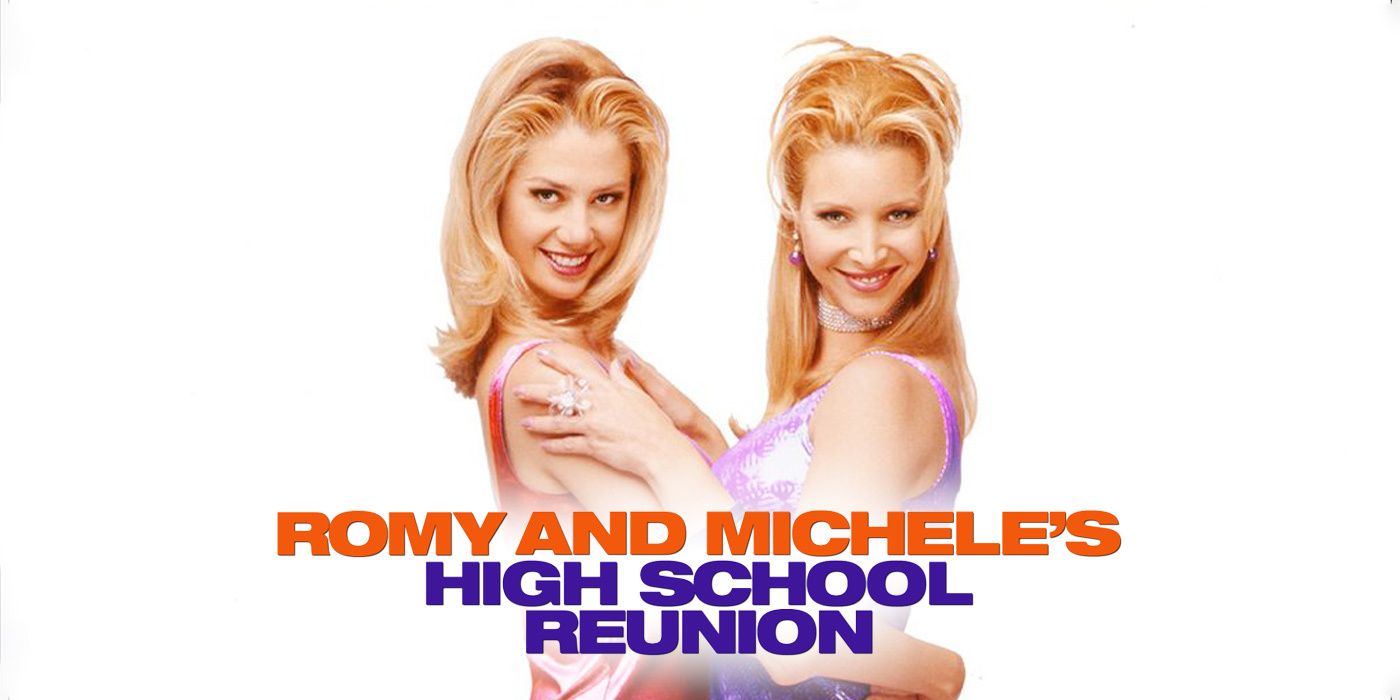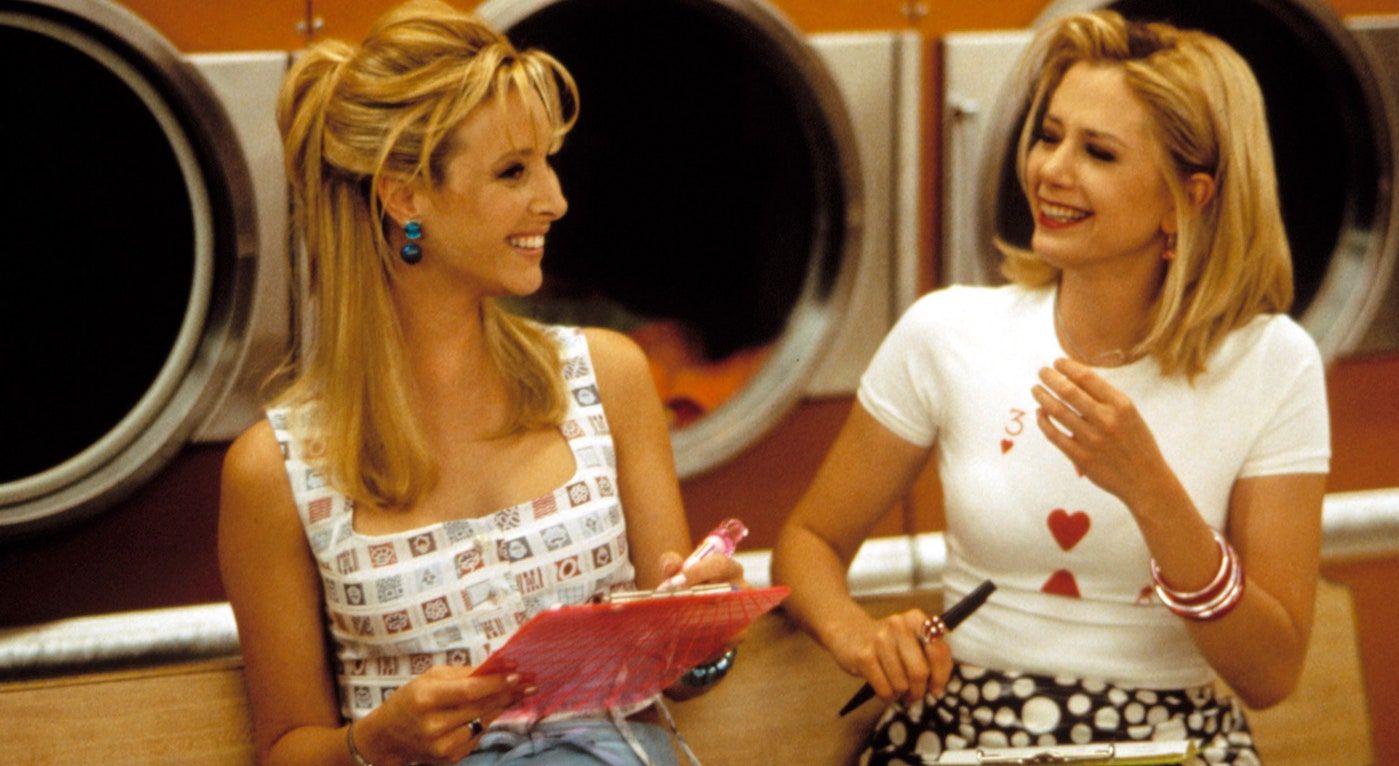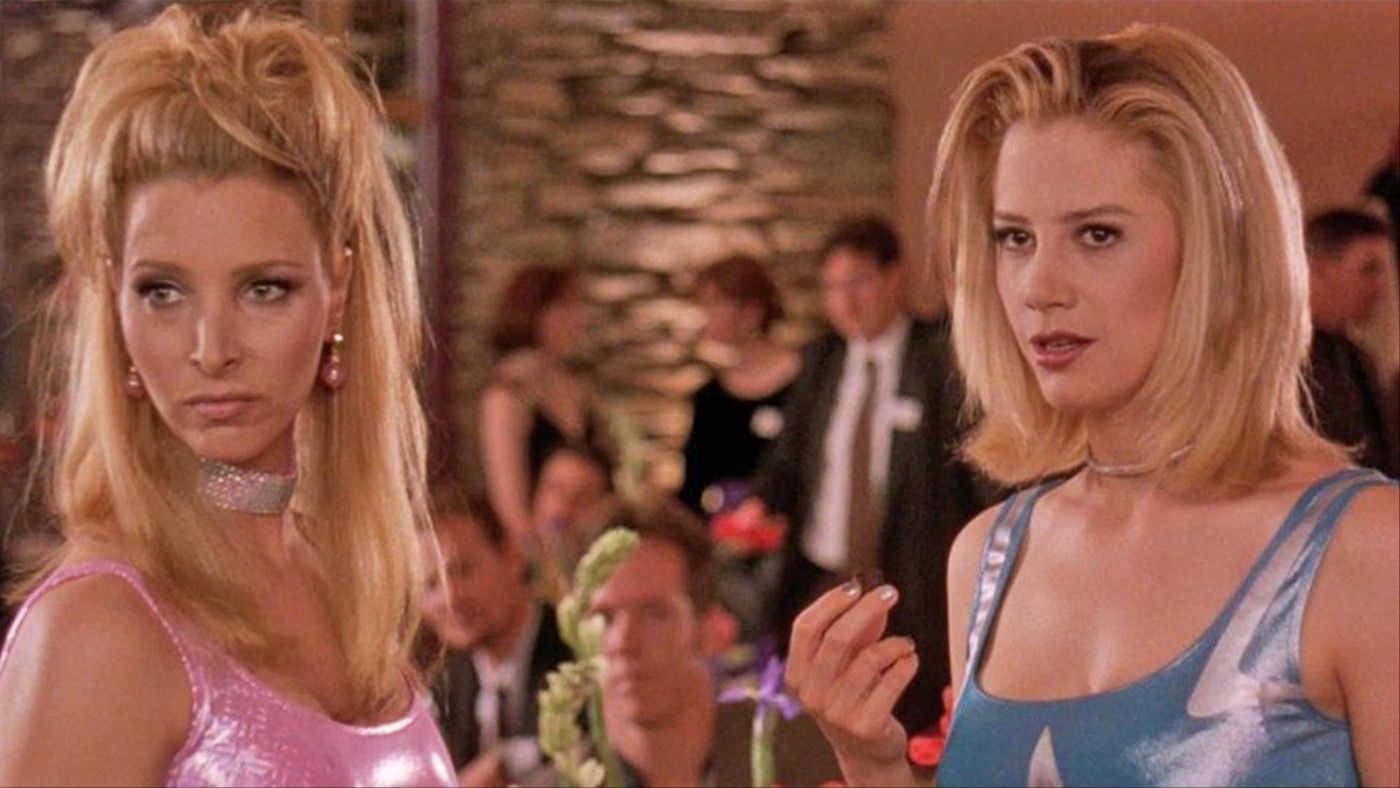Released in 1997, Romy and Michele’s High School Reunion paired Lisa Kudrow and Mira Sorvino in a raucous buddy-comedy about two young women chasing acceptance from their peers at their 10-year high school reunion. As the film nears its 25th anniversary, it stands out amongst other films of the genre due to its strong portrayal of its leads; longingly framing them as a pair of odd, yet caring goofballs that the audience grows to love due to their sympathetic motivations. This is particularly notable given that throughout the 90s and early 2000s, blonde women in film and television were relegated to portraying ditzy bimbos with little to no characterization, existing only for the audience and other characters to laugh at.
We join Romy and Michele in their small one-bedroom apartment in Venice Beach, where the two enjoy a laid-back lifestyle watching television, flipping through their high school yearbook, and attending what appears to be the only club in the Venice/LA area. One day at work, Romy recognizes an old high school classmate, and asks if she’ll be attending their 10 year reunion. Learning that her former classmate is a successful entrepreneur, she kicks herself and Michele into high gear, attempting to fast-track their successful life so they have something to flaunt at the reunion.
After conning one of Romy’s coworkers into loaning them a flashy Jaguar convertible, the two head to Arizona to attend the reunion. It’s during this road trip that we begin to learn about their insecurities - Michele being afraid that people think she’s unintelligent (Romy included), and Romy about her lacking professional life. They attempt to dress and carry themselves as impressive business professionals, asking a waitress at a roadside diner for the “businesswoman special”, and lying to their classmates, telling them that they invented Post-its. After continually failing to convince their peers that the two are successful, they decide to embrace their personal strengths, changing into homemade outfits that allow their true selves to shine, effectively freeing themselves of the burden of their own personal expectations. The film culminates in neither Romy or Michele committing to a relationship, doubling down on the strength of their friendship and using a loan from a former classmate and romantic interest to open a successful clothing store on Rodeo Drive. By allowing us to explore their insecurities and motivations, we empathize with them and understand them as compelling characters with believable flaws.
In 2004’s Mean Girls, Amanda Seyfried’s character, Karen, is consistently used as the butt of the joke, introduced as “one of the dumbest girls you will ever meet”. Memorable sequences include her proclamation that she can predict if it’s going to rain, by going outside and feeling if there is rain falling on her breasts, or applying a bedazzled K on her chest in the mirror only to turn around and reveal that it’s backward. They’re funny sequences in the moment, but because Karen is never explored as a character, her ditziness comes across as malicious and ridiculing screenwriting as opposed to a fun affectation.
This isn’t to suggest that there weren’t other strong female leads subverting stereotypes in this period in film. Legally Blonde’s Elle Woods proved that an intelligent, attractive young blonde woman could be just as good at finding a good bargain as studying law in the country’s most prestigious university. While Legally Blonde is incredibly important to the genre, there’s an argument to be made that the film posits Elle’s preoccupation with her appearance is excusable because of the value she provides as a lawyer. The final courtroom sequence of the film involves Elle defending a woman who is accused of murdering her husband. The plaintiff, daughter of the deceased, has her alibi calculatingly dismantled by Elle, who remarks that she would never have taken a shower freshly after getting a perm as it’s “the first cardinal rule” to not wet your hair for 24 hours; comparing it to a story of her sorority sister who accidentally ruined her perm. It’s an enthralling, heart-pounding sequence that shows Elle fulfilling her aspirations of becoming a successful attorney. However, it raises the question: would Elle’s ditzy nature and fashion fixation be as accepted by the audience if she hadn’t achieved that goal?
Romy and Michele have no such academic ambitions, having barely scraped their way through high school and having a single unsuccessful customer service job between the two of them. Their lack of success and resulting insecurity drive them to lie to their peers at their 10-year reunion, a plan that results in nothing but more ridicule. After regrouping outside the event, the two come to the realization that they are enough to satisfy whatever arbitrary bar of success they had set for themselves (to co-opt more 90’s pop culture - literally “come as you are”). The two are ditzy and often say unintelligent things, but the movie celebrates their strengths and shared connection; showing the audience that it’s okay to not live up to everything we thought we’d be. The film’s through-line of personal acceptance and focus on contentment is wonderfully refreshing.
Following on from that theme, we later learn that despite all of the horrible flashbacks we’ve seen of Romy and Michele’s time in high school, Michele never realized the extent of their mistreatment at the hands of the popular kids, and was always happy to just spend time with her best friend, Romy. Throughout the movie, the two exhibit a level of emotional intelligence that was typically not explored in these archetypes. Resourceful and creative, they create multiple outfits throughout the movie that are praised by their successful fashion editor classmate. We come to understand them as caring individuals who chose to invest their time supporting one another and growing within the context of their friendship instead of pursuing careers, an angle that’s shown in an uncharacteristically aspirational light. While their off-color jokes about “hating throwing up in public” are fun, we always feel like we’re laughing with Romy and Michele instead of at them.
A female empowerment movie with honest, fun female characters exploring their friendship and past trauma together is lofty coverage for a movie whose tagline was “The Blonde Leading the Blonde”. Romy and Michele’s High School Reunion subverts the dismal stereotypes that plagued attractive young stars in the ’90s. A hilarious film in its own right, its legacy stands as a blueprint for well-written female-led buddy comedies.



